A huge thank you to our team of bug identifiers! Without Glenn, Madeline, Kelly, Misty, and Jen, we wouldn’t be able to continue to give you What’s Buzzin’ each week.
Submit your bug pictures to bugid@missoulabutterflyhouse.org (and remember to include your name, the date, and the location where you took the photo)!
Header photo: Ground Spider (Zelotes sp), Glenn Marangelo, May 4, 2025. Missoula, MT
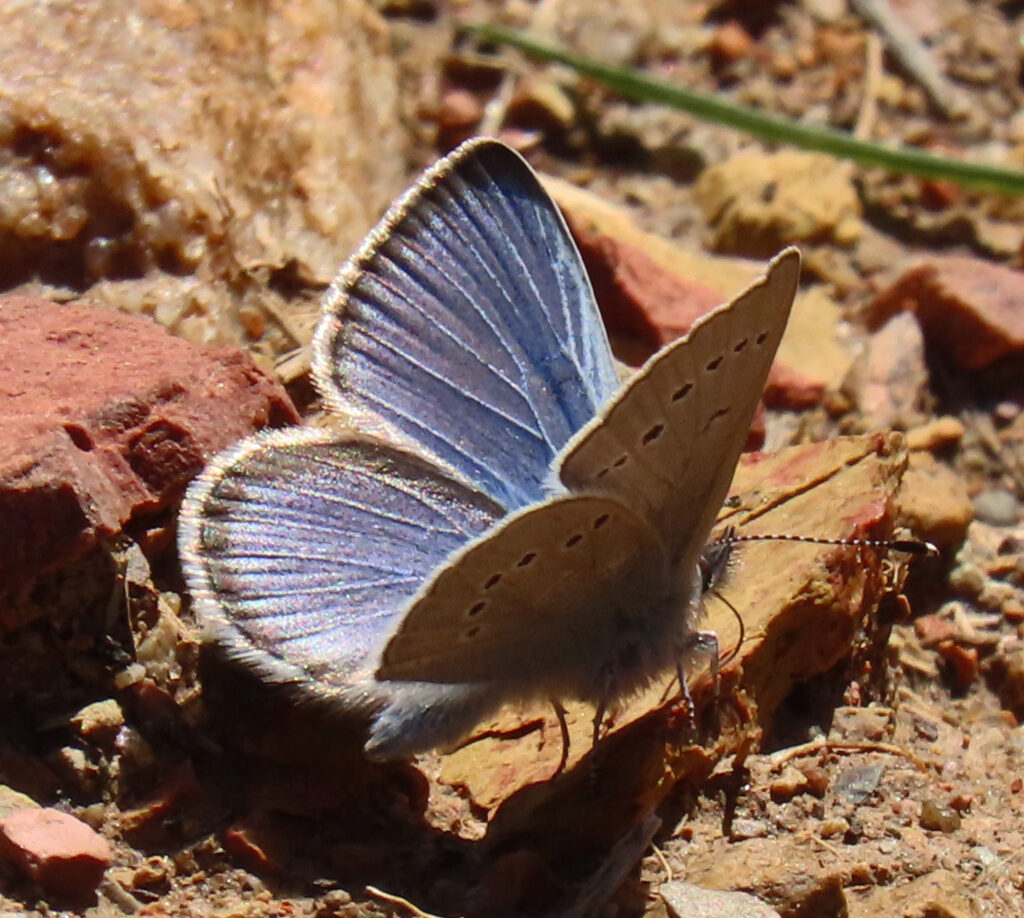
Silvery Blue
Glaucopsyche lygdamus
The Silvery Blue is on the wing from May to mid-June and has prominent rows of black spots circled in white on each wing. It can potentially be confused for the Boisduval’s Blue, but the Silvery’s spots tend to be “neater” than those on the Boisduval’s, and they usually lack additional spots toward the inside of the wings (close to the body). The Silvery Blue ranges from central Alaska to southern California in the west. In the east, it can be found from Nova Scotia to Georgia.
Connie Geiger, May 8, 2025. Helena, MT.

Ichneumonid Wasp
Ophion sp
This large tribe of Ichneumonid wasps is found worldwide, with the most diverse representation in tropical regions. That said, there are still 234 recognized species in North America, and identification (as it is with many parasitoid wasps) is challenging, to say the least. As a parasitoid, the wasp searches for prey by tapping its antennae along the ground or, more commonly, along logs and tree trunks. Once found, the wasp will lay eggs in or on its prey; once the offspring hatch, they will feed on the prey item (often while it’s still alive). The adults themselves do not consume other insects, opting instead for flower nectar.
Judy Halm, May 1, 2025, Spokane Creek, East Helena MT
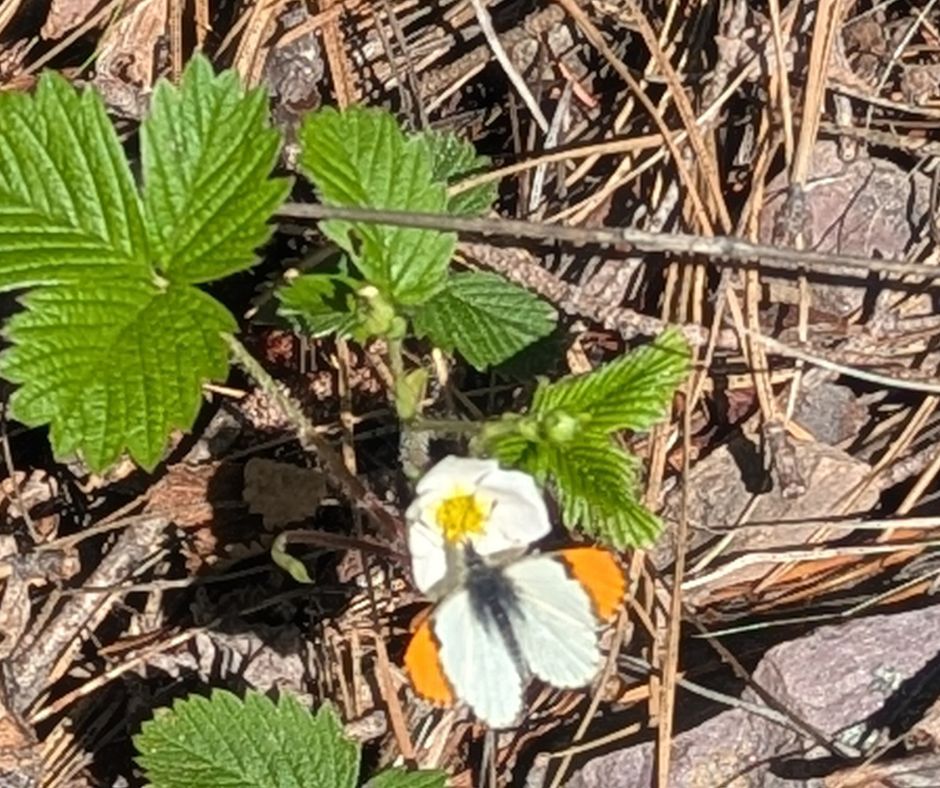
Julia Orangetip
Anthocharis Julia
Move over Sara! Up until a few years ago, this beautiful butterfly was typically referred to as the Sara Orangetip (and still is according to just about every butterfly guide). But this formerly considered subspecies of the Sara Orangetip has been broken out as its own species and is what we find here in Montana …so that’s the name we’re using here. They are typically found from late April into late June in western Montana. The larval food plants are various native and exotic mustards.
Elizabeth Marshall, May 6, 2025, Pattee Canyon, Missoula, M
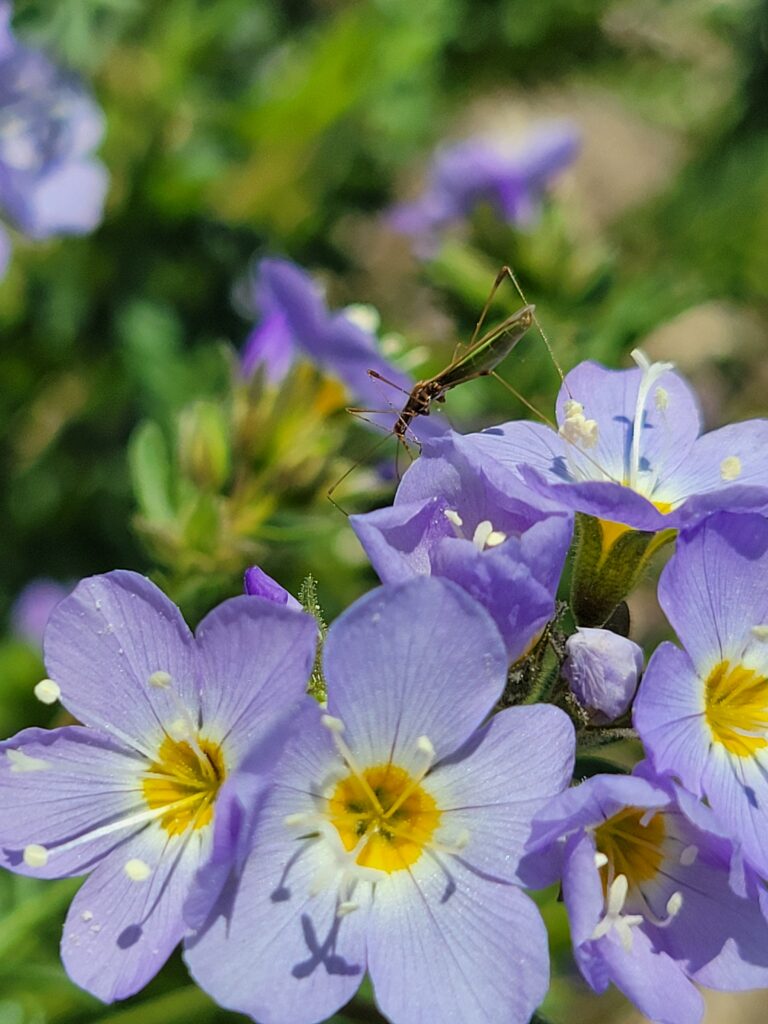
Stilt Bug
Neoneides muticus
One look and you’ll know how these bugs earned their name. Delicate, slender and long-legged, stilt bugs are typically less than 1 centimeter long and are often found on plants that have a long, sticky, hair-like covering. They move slowly and mostly feed on plants, but sometimes prey on small insects. This species can be found throughout the Pacific Northwest and reportedly overwinters frequently in rosettes of Common Mullein.
Klara Briknarova, May 3, 2025. Missoula, MT
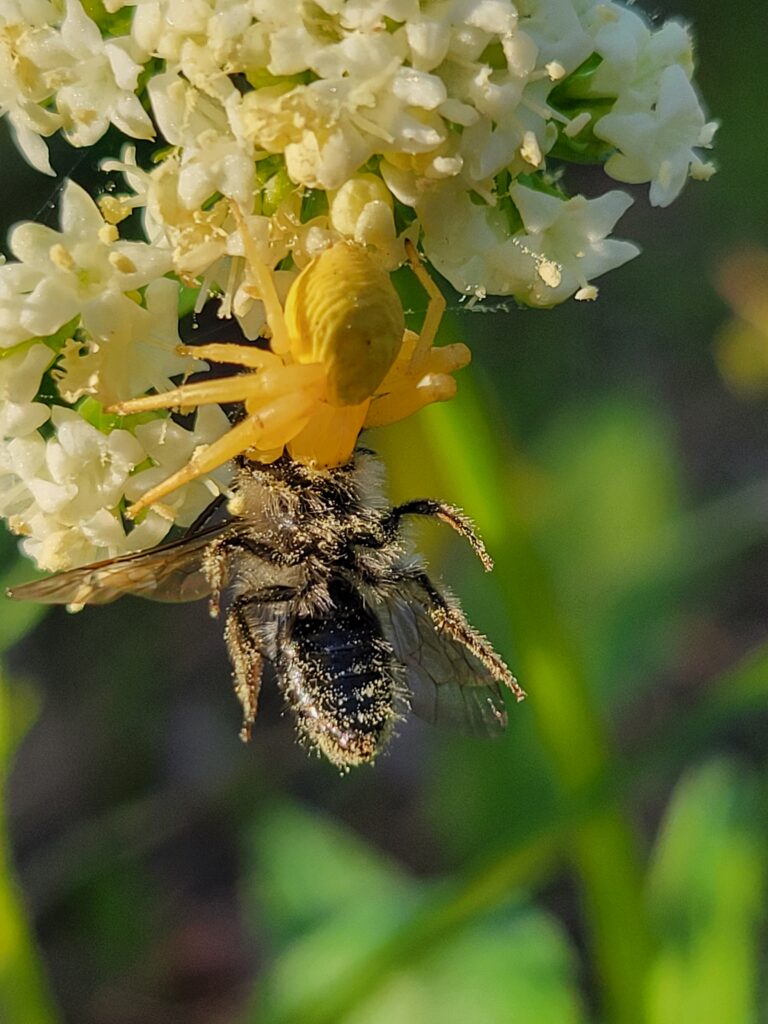
Goldenrod Crab spider
Misumena vatia
This Goldenrod Crab spiders had a successful day capturing this bee. These spiders are masters of disguise and can change color over several days (ranging from yellow to white) to match their environment. Like many spiders, they are sit-and-wait predators: they patiently lurk on flowers, waiting to ambush a bee, fly or other pollinator that happens by. These spiders are widespread across North America and Europe, typically in temperate regions.
Klara Briknarova, May 1, 2025. Missoula, MT
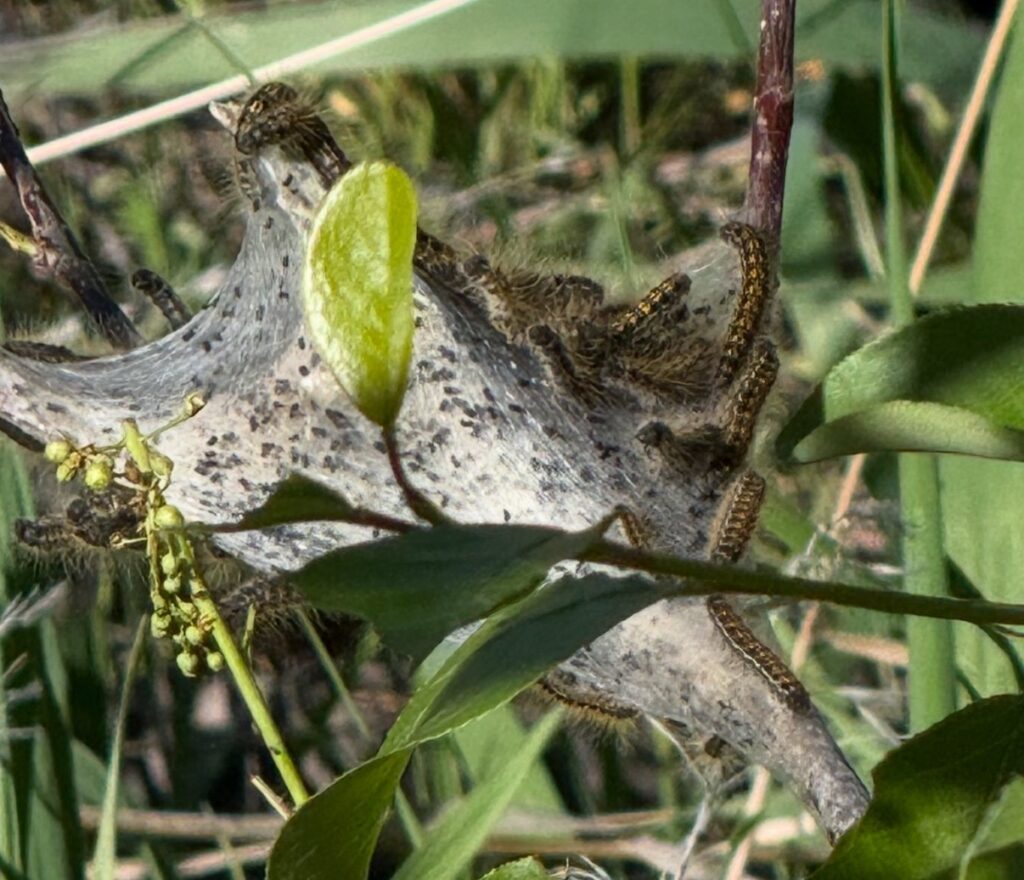
Western Tent Caterpillars
Malacosoma californicum
As you can see, unlike many caterpillars that venture out on their own to feed, these guys like company and spend a large part of their caterpillar life with a bunch of friends in a silken tent. The Western Tent Caterpillar can be found from southwestern Canada and the western US to northern Mexico. On years where their population is high, the caterpillars can completely defoliate their host tree. When the caterpillars reach their later stages of development, they will break up the group, heading off individually to continue feeding and eventually pupate. In Montana, the adult moths are usually found from mid to late summer.
AttribMaddie Marker, May 7, 2025, Missoula, MTution
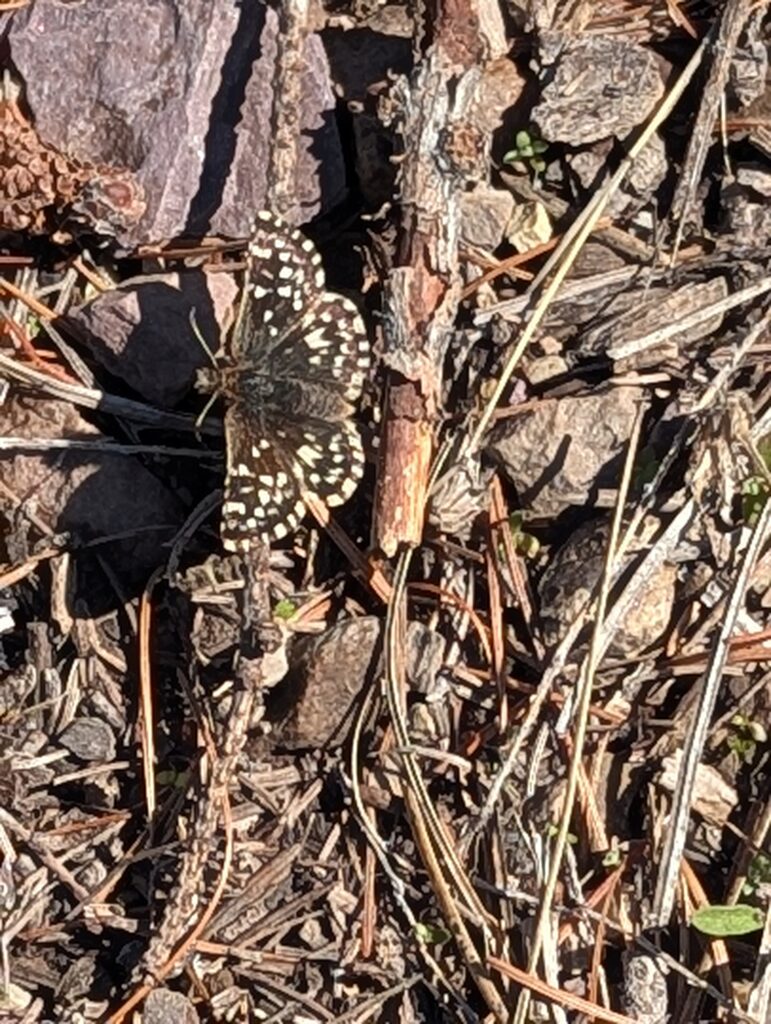
Two-Banded Checkered-Skipper Butterfly
Pyrgus rurali
The two-banded checkered skipper is a western species of butterfly, flying from southwest Alberta to southern California, where an endangered subspecies resides in the mountains east of San Diego. When they are ready to pupate, the caterpillars fold themselves into a leaf cocoon. They will seal the edges closed with a silken thread, turning themselves into the literal definition of “snug as a bug in a rug.” Unlike many early spring butterflies (who overwinter as adults and emerge to mate and lay eggs in the spring), we only see one generation of skipper each year, usually from April to July
Elizabeth Marshall, May 6, 2025, Missoula, MT
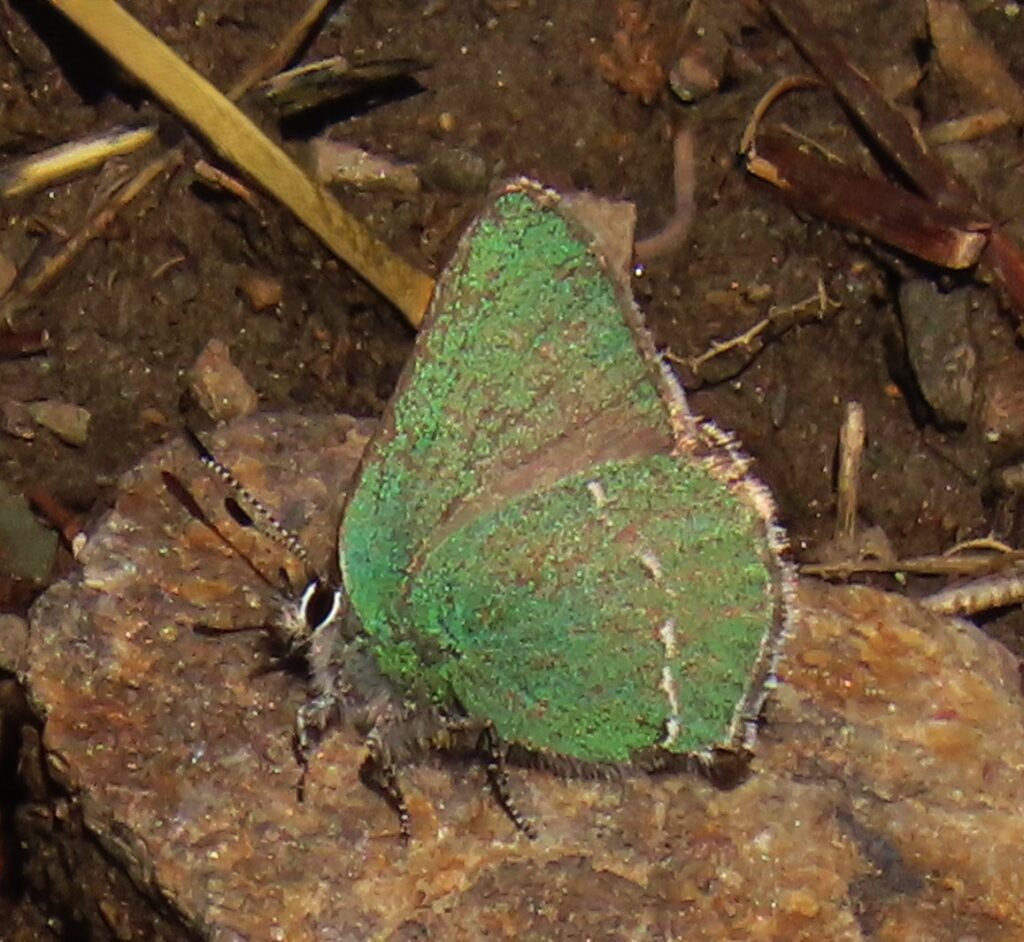
Sheridan’s Hairstreak
Callophrys sheridanii
Callophrys sheridanii, the official state butterfly of Wyoming, can be found in dry, open habitats at relatively high elevations (up to 10,000 feet). They are found in North America along the south coast of British Columbia and parts of Nevada, Arizona, Saskatchewan, North Dakota, and New Mexico. Unlike many species within the genus Callophrys, the striking teal-green Sheridan Hairstreak is “tailless.”
Connie Geiger, May 8, 2025. Helena, MT
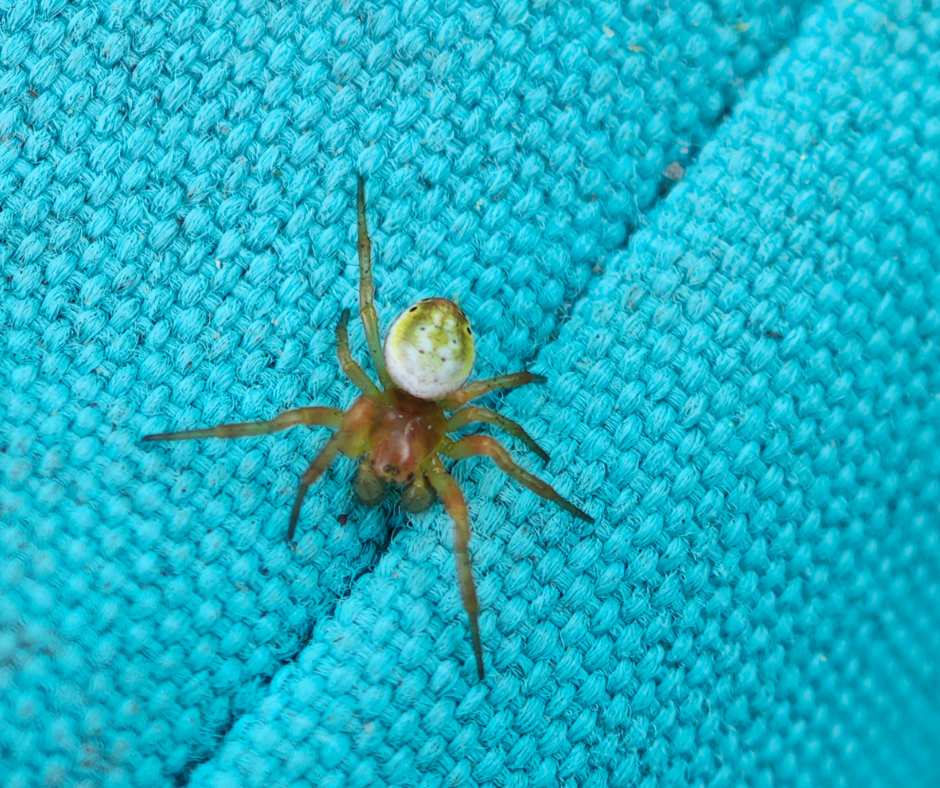
Six Spotted Orbweaver
Araniella displicata
The six spotted orbweaver may be the original itsy bitsy spider. The largest females rarely measure over 7mm in length, with their leg span maxing out at 17mm. Like the majority of spider species, the males are even smaller. Unlike many female orbweavers, who are mature and gravid in the fall, A. displicata lays her eggs in early summer. Many orbweaver species die off, leaving their eggs to overwinter in their egg cases, but by fall, the six spotted orbweaver eggs have already hatched. The spiderlings overwinter in their juvenile stage, seeking a warm retreat to shelter themselves from the harsh winter conditions.
Garrett Pauls, May 2, 2025, Missoula MT